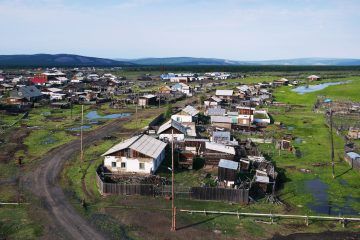Matt Simon in Wired:
 On Saturday, the residents of Verkhoyansk, Russia, marked the first day of summer with 100 degree Fahrenheit temperatures. Not that they could enjoy it, really, as Verkhoyansk is in Siberia, hundreds of miles from the nearest beach. That’s much, much hotter than towns inside the Arctic Circle usually get. That 100 degrees appears to be a record, well above the average June high temperature of 68 degrees. Yet it’s likely the people of Verkhoyansk will see that record broken again in their lifetimes: The Arctic is warming twice as fast as the rest of the planet—if not faster—creating ecological chaos for the plants and animals that populate the north.
On Saturday, the residents of Verkhoyansk, Russia, marked the first day of summer with 100 degree Fahrenheit temperatures. Not that they could enjoy it, really, as Verkhoyansk is in Siberia, hundreds of miles from the nearest beach. That’s much, much hotter than towns inside the Arctic Circle usually get. That 100 degrees appears to be a record, well above the average June high temperature of 68 degrees. Yet it’s likely the people of Verkhoyansk will see that record broken again in their lifetimes: The Arctic is warming twice as fast as the rest of the planet—if not faster—creating ecological chaos for the plants and animals that populate the north.
“The events over the weekend—in the last few weeks, really—with the heatwave in Siberia, all are unprecedented in terms of the magnitude of the extremes in temperature,” says Sophie Wilkinson, a wildfire scientist at McMaster University who studies northern peat fires, which themselves have grown unusually frequent in recent years as temperatures climb.
The Arctic’s extreme warming, known as Arctic amplification or polar amplification, may be due to three factors.
More here.
